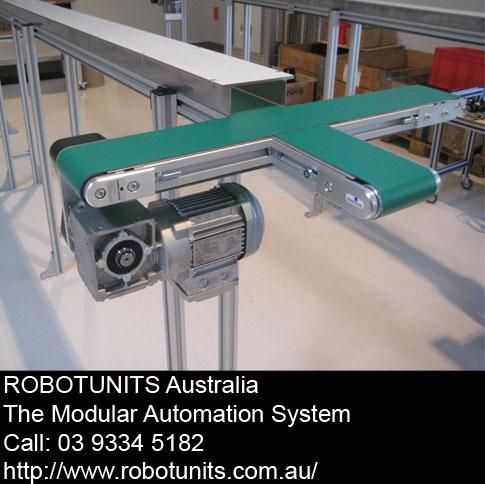Different Types Of Conveyors And Their Functions

When you need to move goods from one place to another in a warehouse, the best form of transport to use is a conveyor. The most common belt conveyors consist of a flat bed, looped around a pulley which rotates around in an endless cycle, moving goods placed on the belt to a per-determined area. Because this way of transporting goods works much faster than moving them manually with the use of hand trucks, baskets or other ways of transportation, it is much more cost efficient. Less staff members to pay translates into cost savings and increased profit for the company.
USING CONVEYORS IS MUCH SAFER
The use of conveyors solution to move items in a warehouse situation as opposed to using manual methods improves the safety factor for handlers, as well as for the goods being transported. The potential for damage to goods when moving items with a fork lift, for example, is much higher than using a conveyor. Safety is also greatly improved for staff who are in control of moving goods and only basic training is required to operate the conveyor system.
DIFFERENT CONVEYOR TYPES
A wide variety of conveyor types and designs are available for use in internal warehouses to move items around. BUCKET CONVEYORS are used to transfer bulky components and certain designs include equipment that vibrate and shake products loose, cool products down and perform other types of tasks required by manufacturers in the process of transporting goods.
Some conveyor types are designed to travel around corners or up a steep incline with different settings available for flexibility. Systems can be customized to suit the specific requirements which a manufacturer may need.
Bags, cartons, sacks and other bulk loads can be moved downwards on a slope and are ideal when moving these goods to shipping areas, designated for loading onto delivery trucks. They are most suited to short item runs in smaller warehouses.
SLIDING BED
These conveyors operate by moving goods on a metal surface which slides along a bed and is used to move unstable loads at a slower speed. They are ideal for moving odd shaped, smaller items in load or assembly stations.
LIVE ROLLER
These conveyors can accommodate heavier loads that have a solid base. Live roller conveyors consist of elongated rollers which are situated over the conveyor bed and are powered by chains, belts or line shafts. These conveyors are usually found in unclean and harsh environments.
ACCUMULATION SYSTEMS
These conveyors operate with sensors to direct the rollers and belts in a controlled manner, stopping and starting the items when necessary at a pace, without the production line being unduly delayed. They are designed with additional controls and motors which can increase the cost, however, cost is offset by the flexibility this conveyor system will provide.
AUTOMATED SYSTEMS
Conveyor belts, the most common of automated systems, are ideal for use in packaging or materials handling, where a wide variety of substances and objects are handled. Depending on the type of belt used in the system, they can handle all types of boxes, pallets, as well as loose items.
VIBRATORY AND GRAVITY CONVEYORS
Used for transporting goods on a downward gradient and have fewer moving parts.
PNEUMATIC CONVEYORS
These systems are used for transporting items horizontally and vertically and can handle the moving of loose items as well. These are just some of the many types of conveyors available to make the task of moving objects from one place to another easier, faster and safer.

